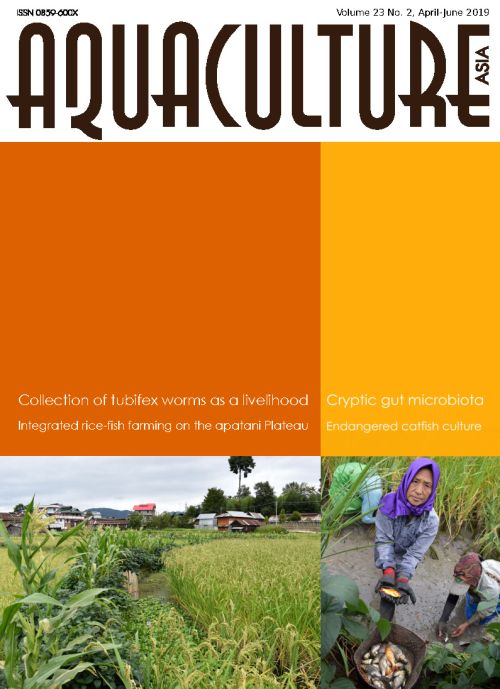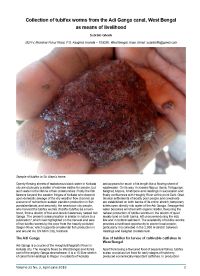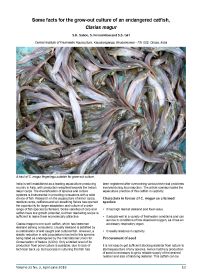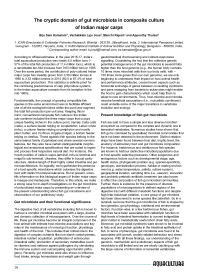Aquaculture Asia Magazine, April-June 2019
2 May 2019 | 10455 views | .pdf | 17.63 MB | Freshwater finfish, Gender, Hatchery and nursery, Inland aquaculture, Livelihoods, gender and social issues, Aquatic plants, India

In this issue:
- Collection of tubifex worms from the Adi Ganga canal, West Bengal as means of livelihood
Subrato Ghosh - Some facts for the grow-out culture of an endangered catfish, Clarias magur
S.K. Sahoo, S. Ferosekhan and S. S. Giri - The cryptic domain of gut microbiota in composite culture of Indian major carps
Biju Sam Kamalam, Vazhakkala Lyju Jose, Manchi Rajesh and Appoothy Thulasi - Integrated rice-fish farming in hilly terraces of the Apatani Plateau, Arunachal Pradesh
Deepjyoti Baruah, R. Posti, Kishor Kunal, P.A. Ganie, R.S. Tandel, D. Sarma, Garima, Kago Tamang and Gyati Rinyo - NACA Newsletter
Creative Commons Attribution.




